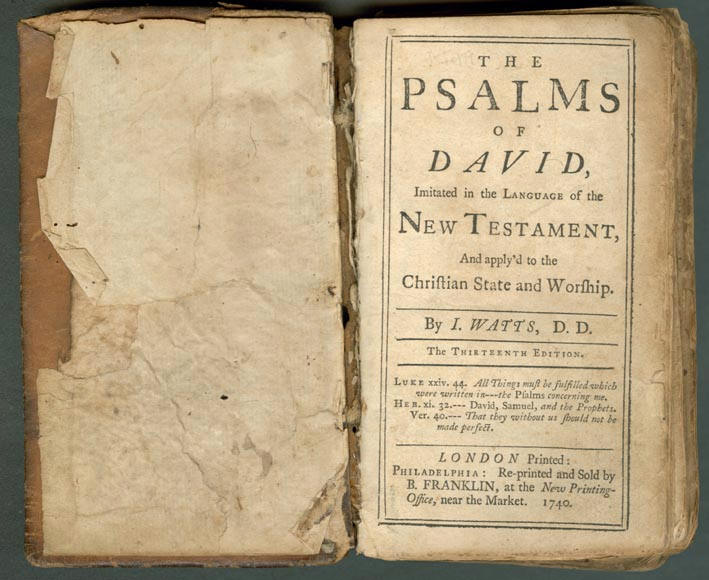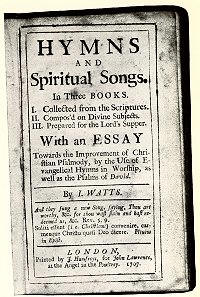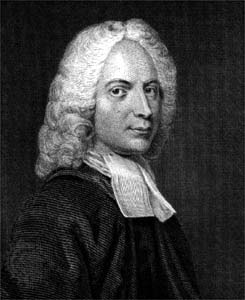What is west gallery music ? | ||
|
|
A very good question!! Essentially this is a phrase used by Thomas Hardy to fit a particular genre of music which flourished in the period roughly between 1700 and 1860, which was sung and played by musicians in both country churches and independent chapels. The music arose because of the need to sing in church, and then to accompany such singing with instruments, there being very few organs at that time. It then spilled over into the heart of the community because church-going was at the centre of village life, and the band of instruments also became the focus of the secular music-making which accompanied many of the village celebrations, both in church and out. In the cities music was on a far grander scale, led by trained choirs in the cathedrals. City and town churches often aspired to the same kind of music, often led by charity children with music specially written for them, and now differentiated from west gallery music by the term 'Georgian psalmody'. Many churches around the area in which we sing bear witness to the battles waged between Charles I's Royalists and the Parliamentary forces of Oliver Cromwell, with holes shot away in their doors and the wanton destruction of imagery, windows and organs. In fact, this process had started well before that time, because from 1534 onwards the dismantling of the monasteries during the English Reformation period led to the destruction of organs as a part of the Roman church. Whilst open hostilities between Catholics and Protestants ceased under Elizabeth I, the organ was not really restored to use in English churches, and although under James I (1603-1625) organ building started again, the Commonwealth (1642-1660) under its Puritan influence caused mass destruction throughout not only town, but also country, churches.
It was only slowly therefore that organ building restarted under Charles I from 1660 onwards, and then really only in cities and towns. Apart from a few villages where there was a wealthy patron, the humble local village church was never really equipped in this way until the Oxford Movement in the second quarter of the nineteenth century began a radical reform of church music and services generally, much influenced, inter alia, by what they saw as appalling musical practices and ruinous churches. In this intervening period, music for services grew from simple unison singing to complicated harmony, led by a village band of almost folk-like instruments (and instrumentalists), and performed by the local people in a way which became an all-absorbing part of life, at best only just tolerated by the 'more educated' element of society. In a time when the population was rising, and church-going was very much a part of village life, additional seating was provided by the addition of galleries, the vast majority of which were at the west end of the church, and in which the singers and players in the Quire installed themselves. Not only did they play for services, but they also played for other village occasions such as Christmas, Harvest, local Feasts, and sometimes with the local militia when there was a need to do so. Local tradition in north Oxfordshire and Buckinghamshire shows that village bands often joined forces on big social and secular occasions, and especially where two local Friendly Societies required musical entertainment on a particular Feast day. Music in church started with the simple lining out by the Parish Clerk of the tune, to which in response local singers would add their own harmonies (rather akin to the singing of Gaelic psalms still carried on today in the Outer Hebrides). To this became added a bass accompaniment from a bass viol, and later a 'cello or bass violin. Still later were added to the village band, fiddles; 'clarionets'; sometimes oboes; and simple transverse flutes, serpents and bassoons. Printed music was almost unheard of, except probably for a single copy purchased on behalf of the Quire by the Churchwardens if they were lucky (sometimes recorded in the Vestry Minutes and Churchwardens' accounts) which was then copied laboriously by the light of a guttering candle into several manuscript books for the use of the Quire, and passed lovingly down from generation to generation. Many such tunes were often re-harmonised by the local quire-master or singing master, who then gave them a different name in order to help him sell his books of psalmody. He often also added his own compositions and several anthems in addition to the well-known psalm tunes of the day.
Some, but not many, of these tunes have survived into the hymn books we still use today. The Old Version of the Metric Psalms, first printed in 1562 and written by Thomas Sternhold and John Hopkins, is represented by Psalm 96 OV (Sing ye with praise unto the Lord), the Old 100th (Psalm 100 OV - All people that on earth do dwell), the Old 104th (Psalm 104 OV- My soul praise the Lord, speak good of his name), the Old 148th (Psalm 148 OV - Ye boundless realms of joy), and one or two others. Next came the New Version of the Metric Psalms, written by Tate and Brady in 1696, from which one of the best well-known surviving tune is that for As Pants the Hart for Cooling Streams (Psalm 42 NV), and another How vast must their advantage be (Psalm 133 NV to the tune LYDIA, and the first hymn in the old Methodist hymn book). Psalm 34 NV, set out above, was often sung to the tune WILTSHIRE, written by Joseph Stephenson (1734-1810), for 45 years Clerk of the Unitarian Chapel in Poole, Dorset.
Isaac Watts (1674-1748) was a dissenting minister who wrote an entirely different form of metrification, and also introduced many hymns into the repertoire, especially of the independent churches, with such well known first lines as When I survey the wondrous cross, Our God, our help in ages past; Jesus shall reign where'er the sun, and many others which have been absorbed into our present day hymnbooks.
A copy of a portrait of Isaac Watts, together with one of his two Books of Hymns and Spiritual Songs. Hymns Ancient & Modern had a lot to answer for in 1861 when it swept away 99% of the then known repertoire of west gallery music, replacing it with Victorian harmonies, or worse, and dictating which tune (in many cases never heard of before) should be used for which words. So much had the gallery type of music fallen into disfavour, mainly it must be said because of the attitudes of the quires themselves who had no musical training, but plenty of attitude, that within twenty or so years after the introduction of Hymns A&M, the old repertoire of the Anglican tradition that we now consider so worthy of preserving, had sunk virtually without trace. Comment is regularly heard after a church service based on the old music, "Well, if they sung that sort of music in church today, congregations would be a great deal larger than they are". I wonder why?? |


